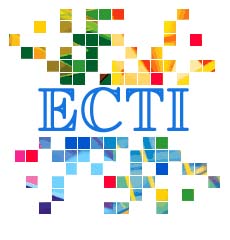Fair Route Selection in Multi-Domain WSNs using Non-Cooperative Game Theory in Separate Sink Scenario
Main Article Content
Abstract
An important use of multi-domain wireless sensor networks (WSNs) is resource sharing between different networks co-existing in the same area to prolong the network lifetime. The challenge of resource allocation in such scenario is how to determine packet forwarding strategies which are beneficial to all networks under constrained resources in non-cooperative multi-domain WSNs. Therefore, this paper proposes the Non-cooperative game algorithm based on Lemke Howson method (NCG-LH) for a packet forwarding game in non-cooperative multi-domain WSNs. The objective is to achieve the best mutual strategy and improve the network performance between two different network authorities in non-cooperative multi-domain WSNs in separate sink scenario. Results show that NCG-LH can obtain longer network lifetime than the existing routing algorithms particularly in presence of failed nodes and high path loss. NCG-LH also outperforms the other routing algorithms in terms of fair route selection by attaining the lowest average difference in energy consumption.
Article Details
This journal provides immediate open access to its content on the principle that making research freely available to the public supports a greater global exchange of knowledge.
- Creative Commons Copyright License
The journal allows readers to download and share all published articles as long as they properly cite such articles; however, they cannot change them or use them commercially. This is classified as CC BY-NC-ND for the creative commons license.
- Retention of Copyright and Publishing Rights
The journal allows the authors of the published articles to hold copyrights and publishing rights without restrictions.
References
[2] B. Rashid, M. H. Rehmani., "Applications of wireless sensor networks for urban areas a survey, " Journal of Network and Computer Applications, Vol. 60, pp. 192-219, 2016.
[3] K. Bicakci, I. E. Bagci, B. Tavli, and Z. Pala, "Neighbor sensor networks: Increasing lifetime and eliminating partitioning through cooperation, " Computer Standards Interfaces,Vol. 35, No. 4, pp. 396-402, 2013.
[4] K. Kinoshita, N. Inoue, Y. Tanigawa and H. Tode, "Fair routing for overlapped cooperative heterogeneous wireless sensor networks," IEEE Sensors Journal, Vol.16, Issue 10, 2016.
[5] T. Jiang, G. V. Merrett, and N. R. Harris, "Opportunistic direct interconnection between colocated wireless sensor networks," International Conference on Computer Communication and Networks, pp. 1-5, 2013.
[6] V. Jelicic, D. Tolic, and V. Bilas, "Consensusbased decentralized resource sharing between colocated wireless sensor networks," IEEE International Conference on Intelligent Sensors, Sensor Networks and Information Processing, 2014.
[7] K. Singhanat, T. Jiang, G. V. Merrett and N. R. Harris, "Empirical evaluation of oi-mac: direct interconnection between wireless sensor networks for collaborative monitoring," IEEE International Conference on Sensors Applications Symposium, 2015.
[8] P. Vaz de Melo , F. da Cunha, J. Almeida, A. Loureiro, R. Mini, "The problem of cooperation among different wireless sensor networks," Proceedings of International Symposium on Modeling, Analysis and Simulation of Wireless and Mobile Systems, pp. 86-91, 2008.
[9] L., Ze and S., Haiying, "Game-theoretic analysis of cooperation incentive strategies in mobile adhoc, " IEEE Transactions on Mobile Computing, Vol. 11, Issue 8, pp 1287-1303, 2012.
[10] Y. Shoham, K.L. Brown, Multiagent system: algorithmic, game-theoretic and logical foundation, Cambridge University Press, Cambridge, 2009.
[11] M. Y. Wu, W. Shu, "InterSensorNet: strategic routing and aggregation," IEEE Global Telecommunications Conference., pp. 910-914, 2005.
[12] M.Felegyhazi, J.P. Hubaux, and L. Buttyan, "Cooperative packet forwarding in multi-domainsensor networks," IEEE International Conference on Pervasive Computing and Communications Workshops, 2005.
[13] J. Yang and D.R. Brown, "Energy ecient relaying games in cooperative wireless transmission systems," Conference Record of the Forty-First Asilomar Conference on Signals, Systems and Computers, 2007.
[14] S. Lasaulce and H. Tembine, Game theory and learning for wireless networks: fundamentals and applications, Academic Press, 2011.
[15] Q. Fan, N. Xiong, K. Zeitouni, Q. Wu, A. Vasilakos, and Y.C. Tian, "Game balanced multifactor multicast routing in sensor grid networks," Information Sciences, Vol. 367-368, pp. 550-572, 2016.
[16] A.Y. Al-Zahrani and F. R. Yu, "An energye efficient resource allocation and interference management scheme in green heterogeneous networks using game theory," IEEE Transactions on Vehicular Technology, Vol. 18, No. 7, pp. 5384-5396, 2016.
[17] Y. Wang, F.R. Yu, H. Tang and M. Huang, "Mean field game theoretic approach for security enhancements in mobile ad hoc networks," IEEE Transactions on Wireless Communications, Vol. 13, No.3, pp.1616-1627, 2014.
[18] H. Moosavi, and F. M. Bui, "A game-theoretic framework for robust optimal intrusion detection in wireless sensor networks," IEEE Transactions on Information Forensics and Security, Vol. 9, No. 9, pp.1367-1379, 2014.
[19] W. Naruephiphat and W. Usaha, "Balancing Tradeoffs for Energy-Ecient Routing in MANETs based on Reinforcement Learning," IEEE Vehicular Technology Conference, 2008.
[20] ZigBee Alliance, accessed on Dec. 28, 2015. [Online]. Available: http://www.zigbee.org.
[21] A. A. Ahmed and N. Fisal, "A real-time routing protocol with load distribution in wireless sensor networks," Journal on Computer Communications, Vol. 31, Issue 14, pp. 3190-3203, 2008.
[22] Q. D. La, Y. H. Chew, B.H. Soong, Potential Game Theory: Applications in Radio Resource Allocation, Springer, 2016.
[23] M. Zheng, "Game Theory used for Reliable Routing Modeling in Wireless Sensor Networks," International Conference on Parallel and Distributed Computing, Applications and Technologies, pp. 280-284, 2010.


